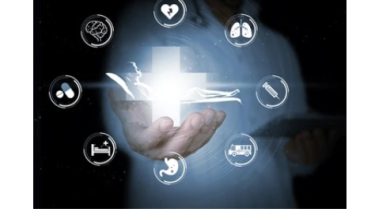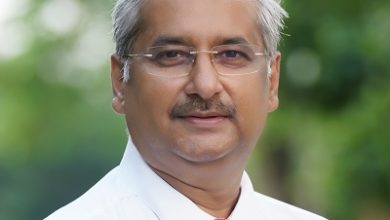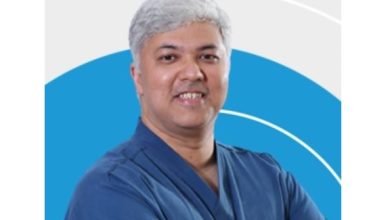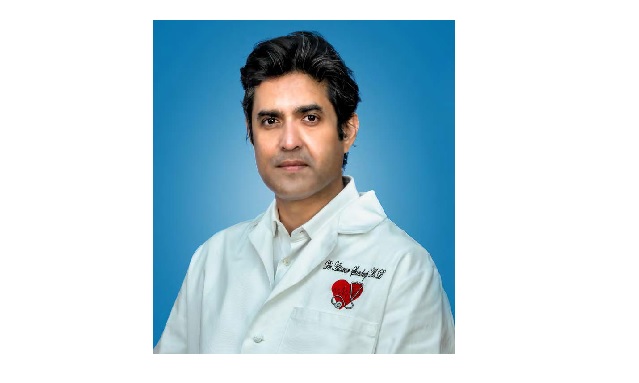
A 32-year-old man from Chandigarh suffering from sarcoidosis leading to fibrosis of the lungs, a 51-year-old lady heart transplant recipient from Andhra Pradesh, a 59-year-old man from Delhi, suffering from severe lung fibrosis due to covid infection and a 34-year-old marketing professional from Haryana who recently underwent a double lung transplant has something common between them. All of them received new lease of life thanks to Dr Sandeep Attawar, Program Director and Chair, Institute of Heart & Lung Transplantation, KIMS Heart & Lung Transplant Institute, KIMS Hospitals and his team of doctors based out of Secunderabad.
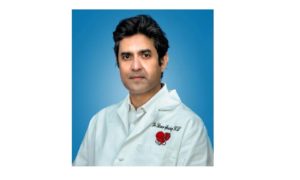
52-year-old Dr Attawar has been practising for the past 24 years and has done close to 12,000 heart surgeries. He has conducted around 250 transplant surgeries – which includes lung, heart and artificial heart transplant. Says Dr Attawar, “Indians are more prone to a high incidence of tuberculosis and end-stage lung disease. Though the US has a lot of heart failure and lung diseases, the country has a concrete database when it comes to the incidence of heart and lung failure when compared to India.”
According to Dr Attawar, the environment plays a huge role in lung diseases. Citing the example of pigeon poop, he says that it is one of the main cause of interstitial lung disease, which is known as hypersensitivity pneumonitis. Apart from this, silicosis and asbestosis are more prevalent in third-world countries.
Indians at a high risk
Every year, around two lakh Indians require heart transplants as compared to 50000 Americans. A majority of the Indians suffer heart disease at an early age and are more prone to diseases like diabetes. Lifestyle changes leading to hypercholesterolemia, tobacco consumption, industrial pollutants, stress due to socio-economic inequality are some of the leading causes of heart diseases. “A limited number of opportunities lead to younger individuals suffering from heart disease at a much earlier age which culminates into massive cardiac attack due to poor heart function,” says Dr Attawar.
Rheumatic heart disease can also lead to heart failure if not treated on time and the patients would need a heart transplant. In certain cases, children suffering from congenital heart disease go undiagnosed and on becoming adults, a heart transplant is their only option. Collateral cardiac and lung disease can progressively lead to end-stage heart and lung disease and then a transplant is the only option.
Besides, these transplants are costly. The economics of heart and lung transplant is such that unfortunately a very small sub-segment or strata of this entire disease burden population can even afford a transplant. Health insurance penetration in India is minimal and many patients have to pay from their own pockets while going in for a heart transplant or a lung transplant. Things have changed for good and many are aware of the ill-effects of heart disease and the need for a transplant.
Says Dr Attawar, “The good thing is that we are now noticing an upsurge in awareness which is making people understand that this is a better option for a better quality of life. We are having greater success as people suffering from end-stage heart or lung disease are coming forward and more receptive towards the option of a transplant.”
The history behind heart and lung transplantation in India
The fourth heart transplant in the world was attempted in India way back in 1968 at KEM Hospital by Late Dr PK Sen and his colleagues. However, the attempt was an unsuccessful one and post that there was a significant lull. In August 1994, the first successful heart transplant was conducted at the All India Institute of Medical Science (AIIMS), Delhi, by Dr P Venugopal. This was followed by Dr KM Cherian at the Madras Medical Mission conducting a series of heart transplant. Thus the southern states instituted transplant programmes in both private and public hospitals, even though the first cases were done in Delhi and Mumbai. While, North India lagged in transplantation, the southern states were at the forefront with a lot of NGOs and government organisations coming forward and moving in the direction of voluntary organ donation after brain death.
“Chennai picked up the pace and continued to do a smattering of cases over the next few years and gradually started picking up also on organ donation where other states laggard.” Sometime, during late 2007-08, the southern states of India witnessed a sudden spurt in transplant activity and it can be attributed to the ‘Hithendra Effect’. It is the heartwarming case of a 15-year-old boy named Hithendra, who lost his life in a motorbike accident.
Hithendra’s parents chose to donate his organs, which brought the focus back on organ donation and sparked off a movement for organ donation, called the ‘Hithendra Effect’. Post this Chennai and most of TamilNadu continue to be the leader in organ donations for probably a decade till other states are started picking up and even overshadowing Tamil Nadu as far as organ donation rates were concerned.
In the early part of the last decade, a couple of centres in Chennai took a keen interest in heart and lung transplantation and between 2016-17 and 2018-19, it became a larger movement where no less than 150 to 200 transplants were conducted annually.
Also, states like Telangana and Karnataka did some fabulous job while Kerala did some exceptional work for a few years but later got embroiled in controversies. The southern states of India account for 92 – 95 per cent of all the organ donations and the main reason is that the government in those states came forward to sponsor heart and lung transplant. But it had its own set of challenges as the government regulations were tight and only very few patients can avail the benefits. But it was a blessing for many below the poverty line or lower-middle-income group. This also led to many heart surgeons going in for transplantations as a viable option with end-stage heart disease especially with heart failure. Pune, Mumbai, Nagpur in Maharashtra followed suit and have now good transplant programmes.
Says Dr Attawar, “I started transplants in 2012 at Global Hospitals Chennai, right at that moment when organ donation was beginning to happen and I spent a year there. Initially, I was reluctant as the programme was at a nascent stage despite having several donors and recipients. The amount of strength and back up required to make an impact was less. Later, I moved to Gurgaon. In 2017, I went back to Chennai and started with a team of 30 professionals for end-stage heart and lung disease. We conducted around 65 transplants in 2017 and the number increased by 15 per cent in the next year. Between 2019 till the end of 2020, we completed 224 heart and double lung transplants in Chennai.
We started two satellite centres one in Bengaluru and the other in Mumbai. So we had three centres by the end of 2020 and a dozen and half cases were looked into before the pandemic set in.”
The COVID-19 effect
The transplant activity completely ceased between March – July 2020. During the interim period of six months, when everything came to a standstill, there were probably close to 55 recipients on the waitlist who were desperately waiting for an organ transplant. Probably less than a quarter of them survived the pandemic and most of them died during this waiting period.
Surprisingly, the neighbouring state of Telangana was going ahead with organ transplantations despite the pandemic. This was because donations were happening during the pandemic and the government didn’t clamp down on the initiative. It was at this time, Dr Attawar decided to move to Hyderabad and set up services at Krishna Institute of Medical Science Hospital also known as KIMS. The department for transplant was set up in early June and the services started from the middle of August onwards.
Says Dr Attawar, “By August 15, 2020 we conducted a double lung transplant. We realised that there was a reasonable number of recipients waiting for transplants. Post-covid lockdown, we witnessed a huge influx of patients having lung infection.”
According to him, some of the patients were in extremely bad shape, having multiple and viral infections. Sadly less than a quarter of them even reached a stage where the lungs were completely unrecoverable and a double lung transplant was the only option. Some of these patients spent between 25-54 days at Extracorporeal membrane oxygenation (ECMO) treatment.
Subsequently, the numbers of donors increased in Hyderabad and the centre witnessed 15- 18 donations a month. “It may be noted that the biggest centre in North America is North Western, where seven covid double lung transplants were undertaken whereas we conducted 10 transplants till the end of last week, though some of the patients are still on life support and waiting for a suitable organ donor,” says Dr Attawar.
Under normal circumstances, an individual after a double lung transplant can start a normal life within five days of transplantation. In the case of heart transplants, patients can walk within four to five days after the transplant. It is sad to see that individuals affected by covid who are in the ICU for more than three months have to wait long for a transplant and are taking a long time to recover Dr Attawar said.
Team effort
Transplant is a team effort. Dr Attawar says, “We live in a world of limited opportunities and huge challenges, so achieving something as solid organ transplant successfully and in keeping these patients alive is another key thing. I always felt that a good team approach can make a lot of difference for transplant patients.”
He goes on to add, “We have a team of transplant coordinators who are clinical coders and ICU nurses, having experience with patients who have recently undergone heart surgeries. The ability to understand the challenges which patients face not only in the ICU but also in the long term as they rehabilitate and go back to normal life is something like an achievement.”
For a group of 270 post-transplant recipients, KIMS has five to six coordinators who take care of 50 patients in a group and do the follow up every week. Using WhatsApp and social media extensively, the process of coordination has become easier.
According to Dr Attawar, in case of any eventuality, someone from the group immediately takes up the issue and solves it. It is free of charge service and the response time is between four to six hours. If any recipient goes back to their hometown, the doctors liaise with the local physician and solve the issue fast. According to Dr Attawar, this initiative helps to monitor immunosuppression.
Most of the patients require drug testing very frequently. These and other tests and follow-ups are done by the coordinator and doctor’s advice is readily available due to the use of social media.
Tracking the medical records
According to Dr Attawar, paperless service will be a game-changer for transplant patients. Says Dr Attawar, “All the records will be available on the hospital management system on the electronic medical record. We will be able to provide paperless transplant service for hearts and lungs. Everything from admission to discharge will be taken care of flawlessly with the help of paperless service.”
Going forward, there are plans to take things to the next level and KIMS has tied up with a Pune-based software company, which is into medical software and helping to develop a registry. All the patient’s case history and details are fed into the registry which will be handed over to the National Organ & Tissue Transplant Organisation (NOTTO).
According to Dr Attawar, KIMS will electronically hand over day-to-day outcomes and long-term survival data to NOTTO. The doctor hopes that this initiative will inspire other hospitals conducting transplants to bring in a drastic change in organ transplantation. All these initiatives will help to provide continuity of care and ensure that patients receive the best.

